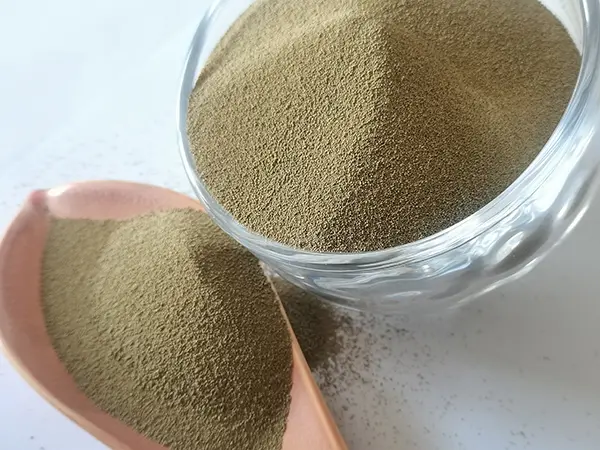Understanding Ceramsite An Innovative Lightweight Aggregate
Ceramsite, a lightweight aggregate material, has garnered attention in the construction and manufacturing industries due to its remarkable properties and versatility. This man-made material is produced by the sintering of natural clay or shale at high temperatures, resulting in a porous, lightweight aggregate that offers a myriad of benefits. In this article, we will explore the characteristics, production methods, applications, and environmental advantages of ceramsite.
Characteristics of Ceramsite
Ceramsite boasts several distinctive traits that make it an attractive choice for various applications. Primarily, its lightweight nature significantly reduces the overall weight of concrete mixtures. This is particularly useful in construction projects where weight limitations are a concern, such as in high-rise buildings or bridges. Additionally, ceramsite has exceptional thermal insulation properties, which help regulate indoor temperatures and ultimately contribute to energy savings.
Moreover, ceramsite is known for its good drainage capabilities. Its porous structure allows for excellent water retention and aeration, making it an ideal choice for horticulture and landscaping applications. The aggregate's high resistance to frost and weathering further enhances its suitability for outdoor use.
Production Methods
The production process of ceramsite typically involves three main steps raw material selection, forming, and sintering
. Initially, natural clay or shale is selected based on its properties and availability. This material is then crushed and processed to create uniform particles. After the preparation, raw material is formed into spherical pellets, which ensures that the final product maintains a consistent shape and size.The crucial step in ceramsite production is sintering, where these pellets are subjected to high temperatures, usually ranging from 1000 to 1200 degrees Celsius. This process causes the particles to fuse together, forming a solid yet porous structure. Once the ceramsite has cooled, it can be screened, graded, and packaged for distribution.
ceramsite

Applications of Ceramsite
Ceramsite serves a variety of applications across different sectors. In the construction industry, it is widely used as an aggregate in lightweight concrete, enhancing the material's longevity and structural integrity. Its thermal insulation properties make it particularly valuable in energy-efficient building designs, contributing to lower heating and cooling costs.
Beyond construction, ceramsite finds application in water treatment systems. Its ability to retain water and facilitate aeration makes it an excellent medium for wastewater treatment, biofiltration, and aquaculture. Moreover, ceramsite is increasingly used in landscaping and gardening, serving as a lightweight soil amendment that supports healthy plant growth while providing good drainage.
Environmental Advantages
In today's environmentally conscious world, ceramsite presents several ecological benefits. Its lightweight nature reduces the amount of material required for construction, thereby minimizing resource extraction and associated carbon emissions. Furthermore, the use of recycled materials in ceramsite production can lead to a significant reduction in waste, promoting sustainability within the industry.
Additionally, ceramsite's thermal insulation properties contribute to energy efficiency in buildings. By reducing the amount of energy required for heating and cooling, ceramsite can play a role in lowering greenhouse gas emissions. Its long lifespan and durability also mean that structures utilizing this material require less frequent repairs and replacements, further lessening their environmental impact.
Conclusion
In conclusion, ceramsite is a remarkable material that stands out for its lightweight nature, thermal insulation properties, and versatility in various applications. From construction to water treatment, ceramsite offers innovative solutions that align with modern sustainability goals. As the demand for eco-friendly building materials continues to rise, ceramsite's role in promoting energy efficiency and reducing environmental harm will only become more prominent in the years to come.
Post time:វិច្ឆិកា . 27, 2024 08:29
Next:Different Varieties of Sand Casting Techniques and Their Applications
